Wildlife conservation is a critical issue that has gained significant attention in recent years. With the rapid decline of various species and habitats around the world, it has become increasingly important to address the threats facing our planet’s biodiversity. Wildlife conservation is a multifaceted concept that involves the protection, preservation, and management of all forms of animal and plant life. It encompasses a wide range of efforts, from protecting endangered species to preserving natural habitats and promoting sustainable practices.
The need for conservation efforts is evident, as countless species are on the brink of extinction due to human activities, such as deforestation, poaching, and climate change. In this article, we will delve into the importance of wildlife conservation, the current state of our planet’s biodiversity, and the various initiatives and strategies being implemented to protect and preserve our natural world. We will also explore the crucial role that individuals, organizations, and governments play in this ongoing battle to safeguard our planet’s wildlife and secure a sustainable future for all living beings.
Sumatran Rhino

The Sumatran Rhino, also known as the Asian Two-Horned Rhino, is one of the world’s most critically endangered wildlife species. With less than 80 individuals remaining in the wild, this remarkable creature faces numerous threats to its survival. Unique among rhinoceros species, the Sumatran Rhino is the smallest and hairiest, featuring distinctive reddish-brown fur. Its two horns, the larger one on the snout and a smaller one behind, are coveted in traditional Asian medicine, making it a prime target for poaching.
Additionally, habitat loss and fragmentation due to deforestation pose significant challenges to its survival. Conservation efforts are underway to protect and restore the remaining habitat, and captive breeding programs aim to bolster the population. The plight of the Sumatran Rhino underscores the urgent need for increased awareness and action to prevent the extinction of this emblematic species.
Amur Leopard

The Amur Leopard, native to the Russian Far East and northeastern China, is one of the world’s most endangered big cats. With an estimated population of fewer than 100 individuals remaining in the wild, this elusive creature faces a multitude of threats to its survival. Admired for its beautiful coat of fur, characterized by rosette-shaped markings, the Amur Leopard has fallen victim to rampant illegal hunting and poaching for its highly valuable pelt.
Additionally, habitat destruction and fragmentation, primarily due to logging and agricultural expansion, have further diminished its already limited range. Conservation efforts are focused on protecting its remaining habitat, strengthening anti-poaching measures, and promoting sustainable land management practices. The conservation of the Amur Leopard is crucial not only for preserving biodiversity but also for maintaining the delicate ecological balance of the region.
Mountain Gorilla
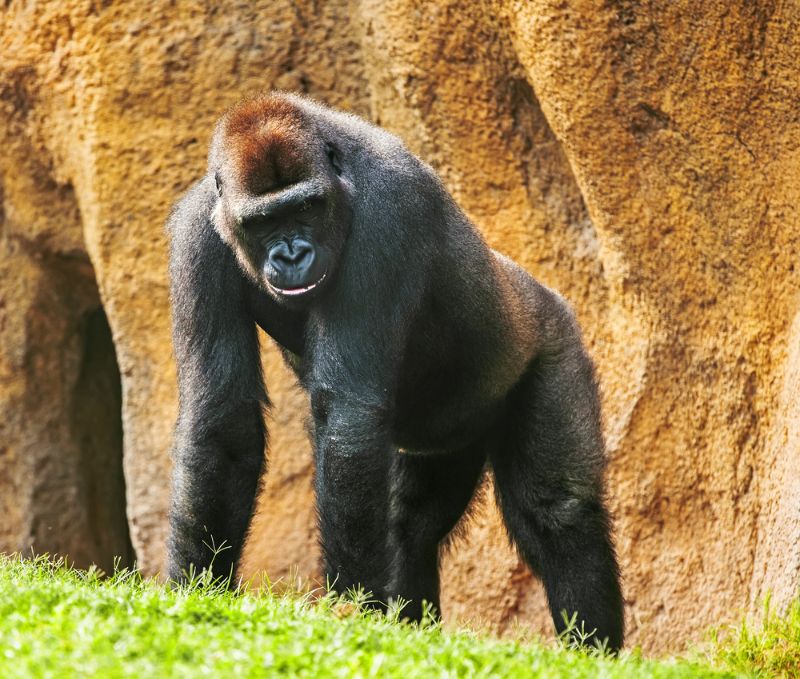
The Mountain Gorilla, scientifically known as Gorilla beringei beringei, is a critically endangered species found in the volcanic mountains of Central Africa. Known for their immense size and strength, these gentle giants are closely related to humans and share approximately 98% of our DNA. With only an estimated population of around 1,000 individuals left in the wild, the Mountain Gorilla faces numerous threats to its survival. Habitat loss, primarily due to deforestation and encroachment for agricultural purposes, has severely impacted their already limited range.
Additionally, illegal poaching and the illegal wildlife trade pose a significant risk to these magnificent creatures. Conservation efforts, spearheaded by organizations and governments, focus on protecting their habitat, implementing anti-poaching measures, and promoting sustainable tourism practices that benefit local communities. The preservation of the Mountain Gorilla is not only vital for safeguarding this unique species but also for maintaining the delicate balance of the ecosystems they inhabit.
Vaquita
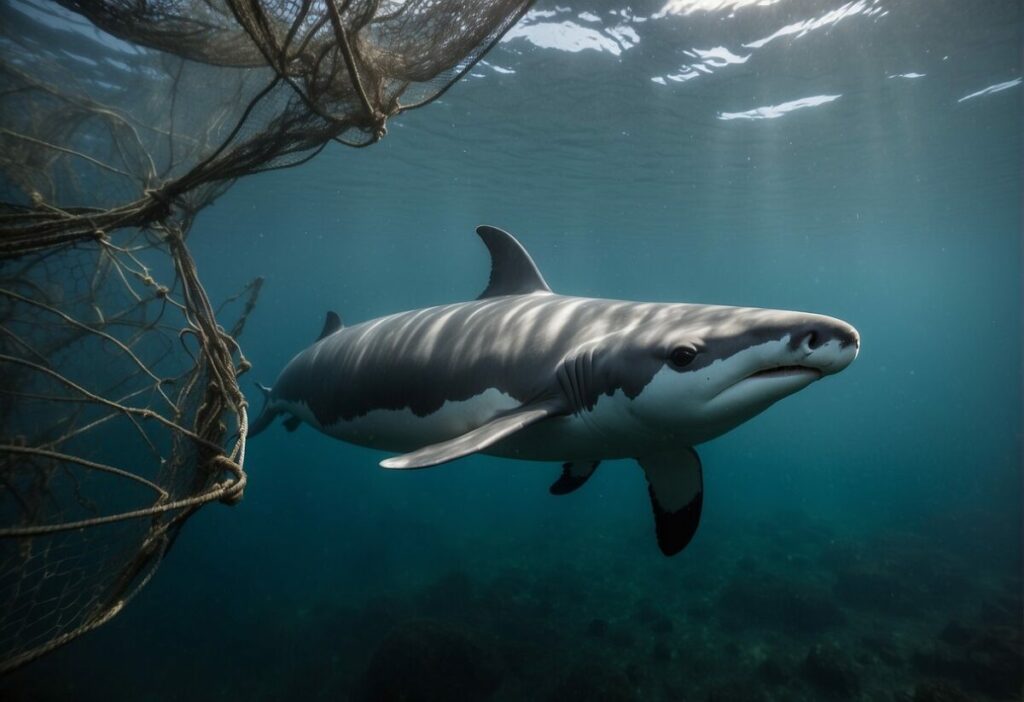
The Vaquita, scientifically known as Phocoena sinus, is a critically endangered porpoise species that is native to the Gulf of California. With less than 10 individuals remaining in the wild, the Vaquita is considered the most endangered marine mammal in the world. This small, elusive creature faces a multitude of threats, the most prominent being illegal fishing practices such as gillnetting. Due to its unintended capture in fishing nets, the Vaquita has experienced a rapid decline in population numbers over the years.
Conservation efforts are underway to protect and preserve this species, including the implementation of fishing restrictions and the establishment of protected areas within its habitat. Collaborative initiatives between governments, local communities, and conservation organizations aim to raise awareness, enforce regulations, and provide alternative livelihoods for fishermen in order to ensure the survival of the Vaquita in its natural habitat.
Javan Rhino
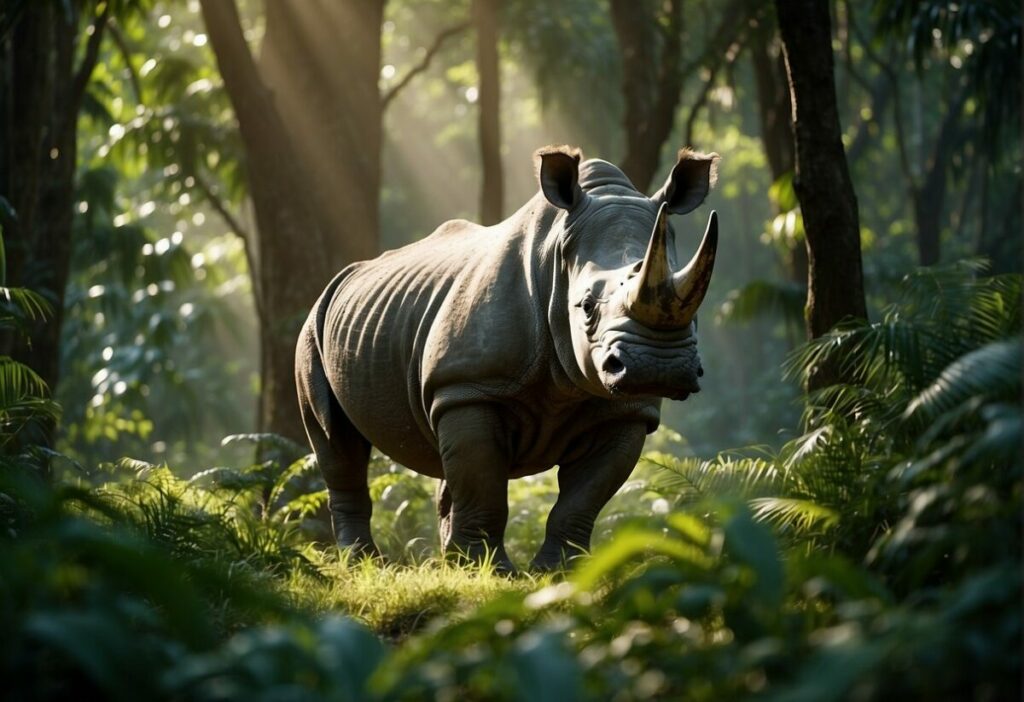
The Javan Rhino, scientifically known as Rhinoceros sondaicus, is one of the most critically endangered large mammals in the world. With an estimated population of less than 80 individuals, this magnificent creature is on the brink of extinction. The Javan Rhino is native to the dense rainforests and grasslands of Java, Indonesia, and is recognized for its unique single horn and prehistoric appearance.
Poaching for its valuable horn and loss of habitat due to deforestation are the primary threats faced by the Javan Rhino. Conservation efforts are being undertaken by various organizations and governments to protect and restore its habitat, strengthen anti-poaching measures, and raise awareness about the importance of preserving this iconic species. These efforts are crucial in ensuring the survival and future generations of the Javan Rhino in the wild.
Saola
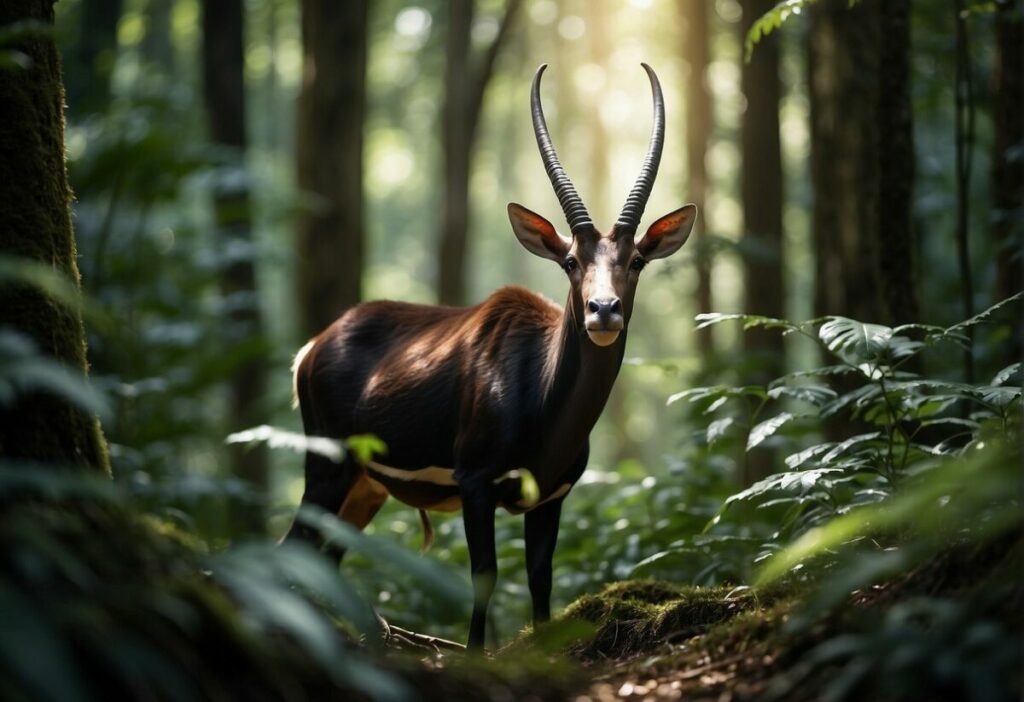
The Saola, also known as the “Asian unicorn,” is a rare and elusive species that inhabits the Annamite Mountains of Vietnam and Laos. With its distinctive long, tapering horns and beautiful chestnut-colored coat, the Saola is truly a remarkable creature. Unfortunately, it is also one of the most endangered wildlife species in the world, with an estimated population of fewer than 100 individuals. The main threats to the Saola’s survival are habitat loss, due to deforestation and agricultural expansion, as well as hunting for its meat and bones.
Conservation organizations and governments are working tirelessly to protect the remaining Saola populations and their habitat, implementing measures such as establishing protected areas, conducting research, and raising awareness within local communities about the importance of preserving this unique and irreplaceable species. Efforts to conserve the Saola are vital in ensuring its survival for future generations and reflect the broader need to protect the rich biodiversity of our planet.
Hawksbill Turtle
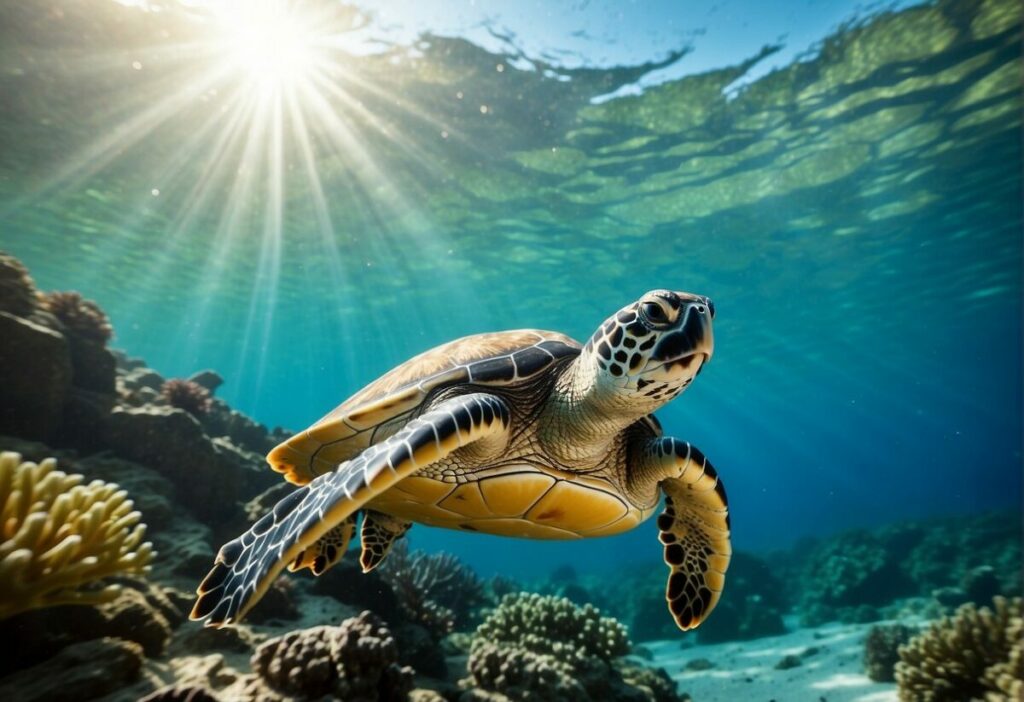
The Hawksbill Turtle (Eretmochelys imbricata) is a critically endangered species that is found in tropical and subtropical waters of the Atlantic, Indian, and Pacific Oceans. Known for its unique, narrow pointed beak and strikingly patterned shell, the Hawksbill Turtle plays a crucial role in maintaining the health of coral reef ecosystems. These turtles primarily feed on sponges, helping to control their populations and promote the growth of other marine organisms.
Unfortunately, Hawksbill Turtles face numerous threats including habitat destruction, pollution, illegal trade, and unsustainable fishing practices. Efforts to conserve this iconic species involve the protection of nesting beaches, the establishment of marine protected areas, and raising awareness about the importance of responsible tourism and sustainable fishing practices. It is essential that we take immediate action to safeguard the future of the Hawksbill Turtle and ensure the preservation of its delicate habitat for generations to come.
Sunda Tiger

The Sunda Tiger (Panthera tigris sondaica) is a critically endangered subspecies of tiger that is native to the islands of Sumatra and Java in Indonesia. Also known as the Indonesian Tiger, the Sunda Tiger once roamed across the rainforests and swamps of these islands. However, due to rampant deforestation, illegal poaching, and habitat fragmentation, their population has seen a drastic decline in recent years. In fact, it is estimated that there are less than 400 individuals left in the wild.
The Sunda Tiger is characterized by its dark orange fur with narrow black stripes, along with a muscular build and a strong sense of stealth. Efforts to conserve this majestic species involve the establishment of protected areas, anti-poaching patrols, and education programs to raise awareness about the importance of tiger conservation. It is crucial that we take immediate action to protect the remaining Sunda Tigers and secure their habitat to ensure the survival of this critically endangered subspecies.
Asian Elephant
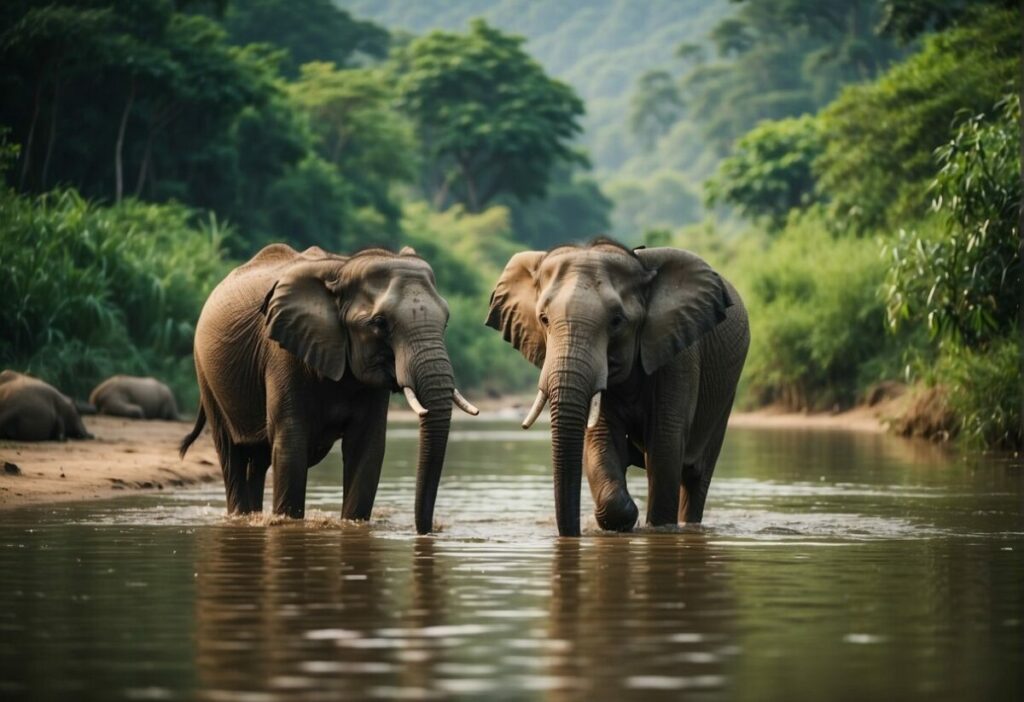
The Asian Elephant (Elephas maximus) is an iconic species that is facing numerous threats and is currently classified as an endangered species. These majestic creatures are found across various countries in Asia, including India, Thailand, and Indonesia. Asian Elephants are known for their large size, with males weighing up to 5,500 kilograms and standing up to 3 meters tall at the shoulder. They have distinct features such as long trunks, curved tusks, and prominent ears.
Habitat loss and fragmentation are the primary factors contributing to the decline of the Asian Elephant population. Rapid urbanization, agricultural expansion, and deforestation have resulted in the destruction of their natural habitat. This forces elephants into conflict with humans as they compete for land and resources.
Additionally, illegal poaching for ivory and the capture of elephants for the entertainment industry pose significant threats to their survival. These activities not only disrupt elephant populations but also disrupt social structures within their herds.
Conservation efforts for Asian Elephants focus on creating and maintaining protected areas, implementing anti-poaching measures, and promoting community-based conservation initiatives. These efforts aim to safeguard the remaining elephant populations and their habitats. It is crucial for governments, conservation organizations, and local communities to work collaboratively to address the challenges faced by Asian Elephants and ensure their long-term survival.
See Related: Endangered Species You Can Help Save Today
Yangtze Finless Porpoise

The Yangtze Finless Porpoise (Neophocaena asiaeorientalis ssp. asiaeorientalis) is a critically endangered marine mammal endemic to the Yangtze River in China. With a distinct lack of a dorsal fin, it is often referred to as the “smiling angel” due to the curve at the rear of its back. The porpoise has a sleek, streamlined body, reaching lengths of up to 2 meters and weighing around 70 kilograms.
Unfortunately, the Yangtze Finless Porpoise is facing numerous challenges that threaten its survival. One of the main factors contributing to its decline is habitat degradation and loss, primarily due to human activities such as dam construction, pollution, and overfishing. The construction of dams has disrupted the porpoise’s natural migration patterns, limiting access to suitable habitats and food sources.
Pollution from industrial and agricultural runoff, as well as excessive shipping traffic, has resulted in poor water quality, affecting the porpoise’s health and ability to find prey. Overfishing in the Yangtze River has reduced the availability of fish, the main source of sustenance for the porpoise, further jeopardizing its population.
Conservation efforts are underway to protect the Yangtze Finless Porpoise and its habitat. These include measures such as establishing protected areas, implementing fishing regulations, and raising awareness about the importance of preserving this unique species. Collaborative efforts between government agencies, conservation organizations, and local communities are crucial for the long-term survival of the Yangtze Finless Porpoise and the preservation of its fragile ecosystem.